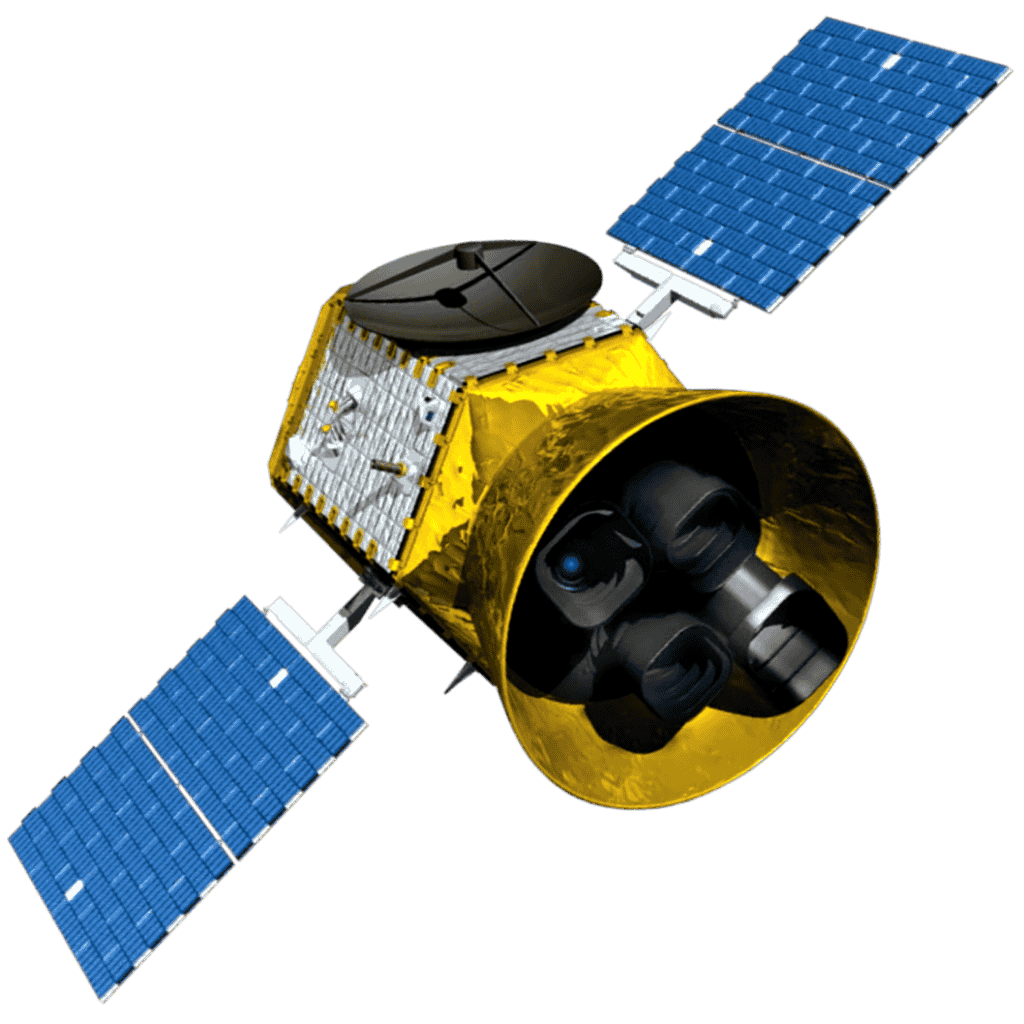Transiting Exoplanet Survey Satellite
Exoplanet Hunter
Wide-field survey telescope for detecting exoplanets

USPs
- Wide-field cameras for exoplanet detection via transit method
- Surveys large sky areas for thousands of exoplanets
- Supports follow-up studies by JWST
- Observes bright, nearby stars for habitable zone planets
- Provides rapid public data releases for global research
- Enables discovery of multi-planet systems
Major Milestones
- 2018-04-18: Launched aboard a SpaceX Falcon 9 rocket from Cape Canaveral, initiating its mission to search for exoplanets across the entire sky.
- 2018-06-18: Entered its highly elliptical 13.7-day orbit around Earth, enabling continuous observation of large sky sectors.
- 2018-07-25: Began its first two-year primary mission, starting with the southern hemisphere survey using its four wide-angle cameras.
- 2019-01-07: Released its first exoplanet candidate list, identifying over 300 potential exoplanets from the initial data.
- 2019-03-19: Confirmed its first exoplanet, Pi Mensae c, a super-Earth orbiting a nearby star, validating its transit detection method.
- 2020-07-20: Completed its primary mission, having surveyed 75% of the sky and identified over 2,000 exoplanet candidates.
- 2021-07: Began its extended mission, focusing on the northern hemisphere and increasing observation time for known exoplanets.
- 2022-03: Discovered TOI-2109b, an ultra-short-period 'hot Jupiter' with one of the shortest orbits known, highlighting extreme planetary systems.
- 2024-04: Reached over 6,000 exoplanet candidates, with more than 400 confirmed, significantly expanding the catalog of known exoplanets.
- 2025-07-17: Celebrates over 7 years of operation, continuing to support exoplanet research and complementing missions like JWST with new discoveries.
Cosmic Portrait
TESS: Searching for New Worlds
Transiting Exoplanet Survey Satellite (TESS), launched by NASA in 2018, is a revolutionary space telescope dedicated to discovering exoplanets—planets beyond our solar system. Using the highly effective transit method, TESS monitors the brightness of nearby stars, searching for the tiny dips in light that occur when a planet crosses in front of its host star. This technique has already unveiled a treasure trove of alien worlds.
- Wide-Field Cameras: TESS is equipped with four powerful wide-angle cameras that enable it to scan over 85% of the sky. Each camera observes a different section of space, and together they provide a broad field of view—ideal for covering large areas and spotting planetary transits that might otherwise go unnoticed.
- Orbit and Coverage: TESS orbits in a unique highly elliptical 13.7-day orbit, known as a P/2 resonant orbit with the Moon. This orbit allows the satellite to maintain a stable environment, free from Earth’s interference, and conduct two-week-long observations of different sky sectors. Over time, TESS builds a dynamic, time-lapse map of exoplanetary activity across the sky.
- Planetary Discoveries: Since its launch, TESS has identified thousands of exoplanet candidates, known as TESS Objects of Interest (TOIs). These range from Earth-sized rocky planets in habitable zones to gas giants in tight orbits. Many of these candidates are now being confirmed through follow-up observations by ground-based telescopes and other space missions like the James Webb Space Telescope (JWST).
Scientific Impact and Legacy
By 2025, TESS has become a cornerstone of exoplanetary science. Unlike earlier missions such as Kepler that focused on a small patch of sky, TESS surveys nearly the entire celestial sphere, providing a much broader catalog of planets orbiting bright, nearby stars. These stars are ideal targets for follow-up study because their relative brightness allows detailed atmospheric characterization using spectroscopic methods.
TESS’s discoveries have already led to the identification of super-Earths, mini-Neptunes, and potentially habitable-zone planets. Some of these worlds exhibit the right conditions for life as we know it—making them prime targets for JWST’s infrared observations, which aim to detect signs of biosignatures in their atmospheres.
Beyond exoplanets, TESS has contributed to stellar astrophysics by capturing valuable data on variable stars, eclipsing binaries, and even transient phenomena like supernovae and tidal disruption events. Its frequent, high-cadence observations offer a unique window into the dynamic universe.
The Road Ahead
As of 2025, TESS continues to scan the skies with remarkable efficiency. Its mission extensions are planned to revisit previous sectors and refine earlier detections, improving accuracy and uncovering multi-planet systems previously hidden in the noise. Its partnership with JWST, the Extremely Large Telescope (ELT), and other observatories makes it a vital part of the exoplanet detection and confirmation pipeline.
TESS is opening the door to new worlds, expanding our search for life beyond Earth.
With each passing day, TESS strengthens humanity’s quest to answer one of the oldest questions: Are we alone in the universe? From nearby red dwarfs to sun-like stars, the planets uncovered by TESS are bringing us closer than ever to finding a second Earth—and perhaps, signs of life itself.
Fun Fact
TESS has discovered over 7,000 exoplanet candidates since 2018!